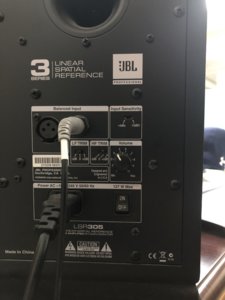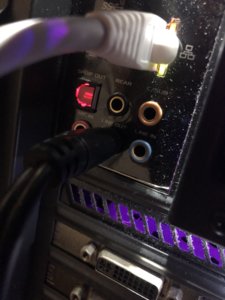Abdulrahman
Active Member
Hi,
I hope all of you are doing well in these troubled times.
I own a pair of JBL305. They have been with me since 2014. Whenever I plug them into the PC via XLR cable, I always hear distortion in the speakers.
To minimize the distortion sound, I had to decrease the volume knob. The volume range on my speakers is from 1 to 10 and I had to put them on 4.5 just to balance between the volume between the PC and speaker.
My PC must be at %50 volume level minimum just to hear things more comfortably.
I need a solution to this problem as what could be causing the speakers to do this sound. The sound is very much like when there is no radio signal.
I've tried using my HDMI audio splitter which splits the audio from the video. Still, the same thing. I feel like it's something to do with how my PC projects the sound.
Could it be the sound card? Should I buy a dedicated soundcard instead of using the one built-in the motherboard?
Perhaps the issue is with the cable itself?
The speakers don't give this sound when the PC is turned OFF. I don't think it's hardware-related.
Also, I tried to switch the cable between the right and left channels. Sadly, the issue is still there.
My motherboard is rather new ASUS ROG MAXIMAS X HERO, so it would be impossible that it can't handle it, right?
Another thing... call me crazy, but when I tried to plug the power cable of one of the speakers to a different power source, the noise suddenly increased! I immediately returned it back to the usual power source. On top of that, I started swinging the cable back and forth noticing how much it's affecting the noise sound. I could say that my swinging does affect it. I'm not sure if the issue is cable-related or perhaps how the cable is touching other cables on the floor and interacting with them.
I'm really confused and have no explanation what on earth is going!
I hope all of you are doing well in these troubled times.
I own a pair of JBL305. They have been with me since 2014. Whenever I plug them into the PC via XLR cable, I always hear distortion in the speakers.
To minimize the distortion sound, I had to decrease the volume knob. The volume range on my speakers is from 1 to 10 and I had to put them on 4.5 just to balance between the volume between the PC and speaker.
My PC must be at %50 volume level minimum just to hear things more comfortably.
I need a solution to this problem as what could be causing the speakers to do this sound. The sound is very much like when there is no radio signal.
I've tried using my HDMI audio splitter which splits the audio from the video. Still, the same thing. I feel like it's something to do with how my PC projects the sound.
Could it be the sound card? Should I buy a dedicated soundcard instead of using the one built-in the motherboard?
Perhaps the issue is with the cable itself?
The speakers don't give this sound when the PC is turned OFF. I don't think it's hardware-related.
Also, I tried to switch the cable between the right and left channels. Sadly, the issue is still there.
My motherboard is rather new ASUS ROG MAXIMAS X HERO, so it would be impossible that it can't handle it, right?
Another thing... call me crazy, but when I tried to plug the power cable of one of the speakers to a different power source, the noise suddenly increased! I immediately returned it back to the usual power source. On top of that, I started swinging the cable back and forth noticing how much it's affecting the noise sound. I could say that my swinging does affect it. I'm not sure if the issue is cable-related or perhaps how the cable is touching other cables on the floor and interacting with them.
I'm really confused and have no explanation what on earth is going!







